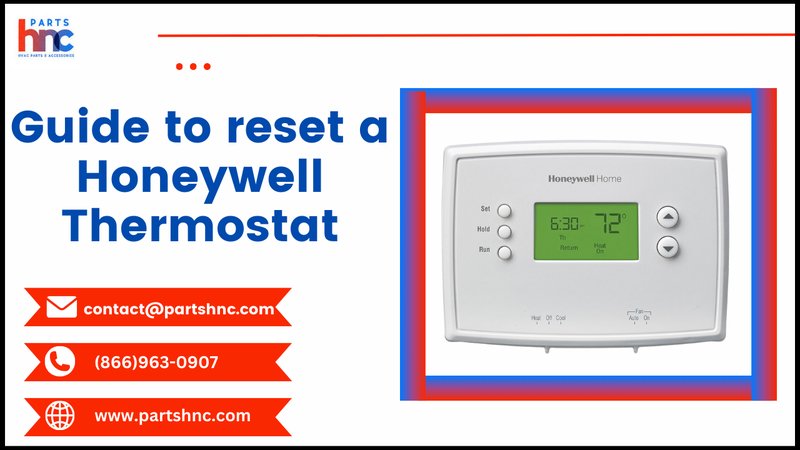
You might ask, “Why would resetting work?” Think of your air conditioner as a mini computer. Sometimes, just like when your laptop acts up, a reset can clear glitches and get things back to normal. In many cases, it’s the easiest, quickest, and least expensive first step you can try before calling in the professionals. Still, the key is understanding what a reset does and how it might help with your specific situation. So, let’s dive deeper into the world of Honeywell air conditioners and understand how this simple trick might just save the day.
Understanding the E3 Error Code
When your Honeywell air conditioner displays an Error Code E3, it’s essentially waving a small red flag, signaling that there’s a hitch in monitoring or controlling the temperature. This error code often points to a malfunction with the temperature sensors, which can throw off the balance of your cooling system. Imagine if your thermostat, which tells the air conditioner how much to cool, miscommunicates. The unit might end up cooling too much or too little, leading to discomfort.
The sensor essentially works like a weather report inside your AC. If the report’s inaccurate, the AC unit can’t make the necessary adjustments to maintain the desired room temperature. It’s like trying to bake without knowing the oven temperature—things can go quite wrong. Hence, when the E3 error pops up, it’s usually a caution signal urging you to take corrective measures, like a reset, before the air conditioner gets overworked or damaged.
Here’s another thing: while the error could be due to a genuine sensor issue, sometimes it’s merely a hiccup in the system’s software. Much like you occasionally need to reboot your router to fix the internet, resetting your air conditioner might clear up any temporary bugs causing the E3 error. However, if resetting doesn’t work, it could mean the problem is more serious and might require further investigation.
Steps to Reset Your Honeywell Air Conditioner
Resetting a Honeywell air conditioner is akin to giving it a quick refresh or a gentle nudge back to normal. It’s a simple process, but it’s essential to follow the steps correctly to ensure the reset is effective. Here’s how you can do it:
First things first, safety! Always start by turning off the power supply to your air conditioner. You can do this by disconnecting the unit from the power outlet or switching off the circuit breaker for that specific appliance. Think of this as hitting the pause button—giving the unit a chance to completely shut down and stop any ongoing processes.
Once the power is off, wait for about 5 to 10 minutes. This pause acts like a reboot period, allowing the air conditioner’s internal systems to completely reset. During this time, the unit is essentially taking a breather, similar to how you might take a moment to gather your thoughts after a long day. After the waiting period, turn the power back on and restart the air conditioner.
Turn on the air conditioner and check if the E3 error code has disappeared. If it has, congratulations! Your reset worked, and your unit is back to operating normally. However, if the error code persists, this might be a sign of a more significant issue that could require professional attention. Always consult your user manual or contact customer support if you’re unsure about the next steps.
When Resetting Doesn’t Fix the Problem
There comes a time when resetting alone just won’t cut it. If the E3 error continues to haunt your air conditioner even after a reset, it might indicate something more complex. The temperature sensors might be faulty, or there could be a wiring issue that needs professional inspection. At this point, you might be wondering, “What now?”
Well, if resetting hasn’t solved the problem, it’s time to dig a little deeper. You might need to inspect the sensors to ensure they’re securely connected and haven’t shifted out of place. In some cases, dust or debris might accumulate on the sensors, affecting their performance. Cleaning them carefully with a soft cloth might help, but be cautious not to damage any components.
If you’re not comfortable doing this yourself, reaching out to a professional technician is a wise step. These experts have the tools and knowledge to diagnose the issue accurately and offer a solution. Think of it like calling a mechanic for your car – sometimes, you need that expert eye to spot the problem and fix it efficiently.
Preventative Tips and Future Considerations
The best way to avoid future E3 errors is to keep your air conditioner in tip-top shape with regular maintenance. Think of it as getting a regular tune-up for your car; it helps catch potential issues before they become big headaches. Regularly clean the filters, and ensure the air vents are not obstructed. This ensures good airflow and keeps your unit running efficiently.
Another good practice is to schedule periodic inspections by a professional technician. These check-ups can identify problems early and prevent them from escalating into more significant issues. It’s a bit like going for regular doctor check-ups to stay healthy and catch any concerns early.
Finally, stay mindful of how your air conditioner behaves day-to-day. Sudden changes in cooling efficiency or strange noises can indicate underlying problems. Address these early rather than waiting for an error code to pop up. With a bit of care and attention, your Honeywell air conditioner can keep you cool and comfortable for years to come.